#Cheiracanthium inclusum
Text
nerd time!! spidersona research!!!
if you see something that is incorrect please let me know!!!!
Yellow Sac Spider/Cheiracanthium
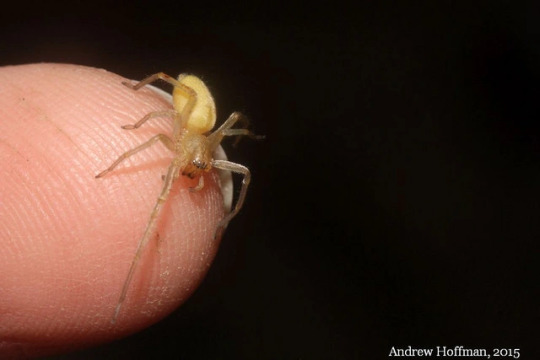


Bite: Creates surface lesion with redness, swelling, burning. Medical attention recommended. Venom is slightly necrotic to humans
Behavior: Bites without reason, hunter (actively chases prey), cannibalistic, most common spider bites. Nocturnal. Do not jump, fast moving, escapes with silk when startled.
Habitat: Gardens, bushes, trees, during cold weather may seek shelter in houses. Northeastern United States, range expanded in recent decades, central Europe.
Size: Females body size range 5-9mm, males 4-8mm. Leg span 2.5cm/1in. Front pair of legs are longest. Males have more slender bodies.
Coloration: Light yellow body, brown jaws, darker legs, vertical dorsal stripes on abdomen. Males are darker. Diet can affect coloration
Body: Scopulae allows them to cling to smooth surfaces like glass, 8 eyes
References: Nebraska University dep of entomology, Wikipedia, WebMD,
Note: I lost some of my references for this entry - take with a grain of salt
Yellow Amycine Jumping Spider
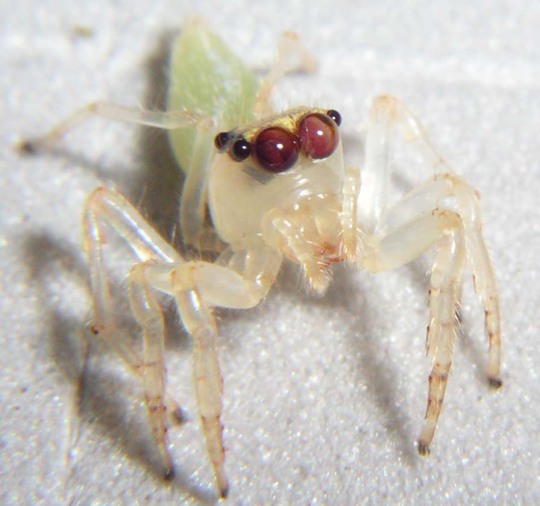


Note: I will be refrenceing Amycine when I can but not much is known about the species
Bite: Unlikely to bite humans, usually runs away. Causes redness, itching, stinging, and swelling. Can be cleaned with soap and water, does not require medical attention
Behavior: Can move rapidly sideways and backwards, pounce on prey. Can jump 20-50 times their body length, use silk dragline when jumping as safety line. Jumping is caused by sudden blood flow change, fully extending legs. Eats insects and other spiders, may drink nectar and plant matter. Hunts during the day.
Habitat: Vegetation, rocky areas, very widespread - no specific habitat. Not found in Greenland
Size: 3.175mm/0.75in, have larger front legs
Coloration: Extremely translucent, eye cones are visible. Joints are dark due to blood flow.
Eyes: Has two eyes on the front, two on each side, and two on the back of their head
References: Wikipedia, US Dept. of Agriculture, Washington State, PestWorld.Org, Michigan State
Striped Lynx Spider



Bite: Little danger to humans, only cause temporary pain and swelling.
Temperament: Daytime ambush predator, nimble. Can shoot venom 20cm/7.9in, only observed in adult females. Strong sense of smell to detect prey. Consuming nectar early in life can deter cannibalism and lengthen lifespan somewhat. Jumps and uses dragline like jumping spiders, is not classified as one.
Habitat: Native coast to coast of southern United States, Mexico, Central America, and the Caribbean. Lives at the top of vegetation in open areas like fields and backyards. Most well seen in Florida and American South.
Size: Females 5.7-6.7mm, males 4-4.5mm and more slender. Fangs are large in proportion to head
Coloration: Pale yellow, can adjust coloration. Males resemble females, but are iridescent that can appear coppery, silvery-green, or purple. Males are usually more red/orange
References: North American Insects & Spiders, University Florida, University Florida, University Florida, iNaturalist
Other spiders I want to look at later: Heliophanus flavipes, Telamonia dimidiata, Crab spiders, Misumena vatia, orchard orbweaver
Note: Always do your own research!!! Doubt the information I gave you!!!
#spiders#spidersona#refrence#Entomology#spider tw#true spiders#Cheiracanthium inclusum#Salticidae#jumping spider#Oxyopes salticus#Striped Lynx Spider#yellow sac spider
4 notes
·
View notes
Text


Yellow Sac Spider (Cheiracanthium inclusum)
24 notes
·
View notes
Text
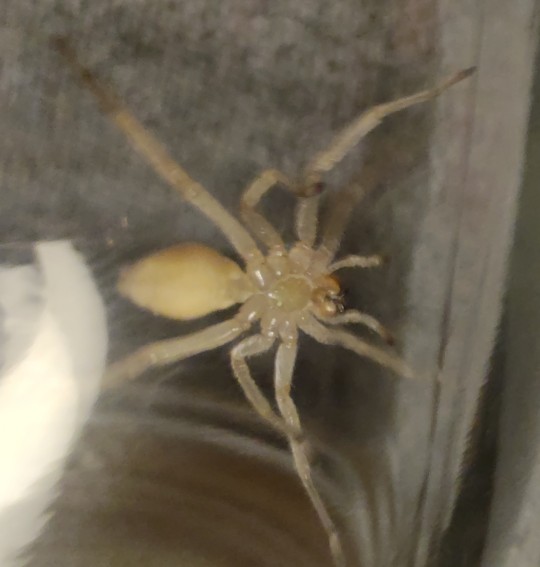
Black-footed yellow sac spider (Cheiracanthium inclusum) found in my house and then moved outside. Their bites are commonly confused for brown recluse despite not being necrotic.
21 notes
·
View notes
Text
Flying Spider!
The black-footed yellow sac spider (Cheiracanthium inclusum) is a species from the Americas but is now also in Africa
They are able to travel easily between trees and shrubs by sending out a single long length bit of web that will be carried by the wind to the structure they are trying to get to
They also sometimes keep the web out and use that to balloon themselves with the wind
If you have read this far why not follow us @animalfacthub for daily animal facts and pics!
-
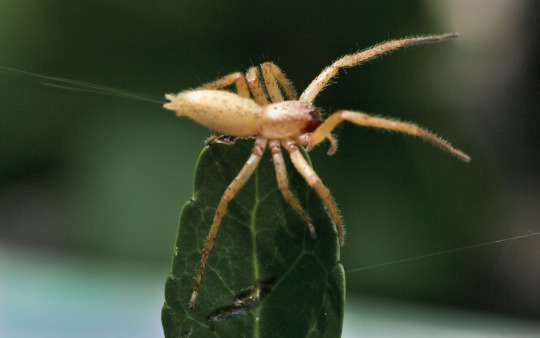
📷1: “Long-legged Sac Spider - Cheiracanthium inclusum” by Cletus Lee on Flickr (CC BY-NC-ND 2.0)
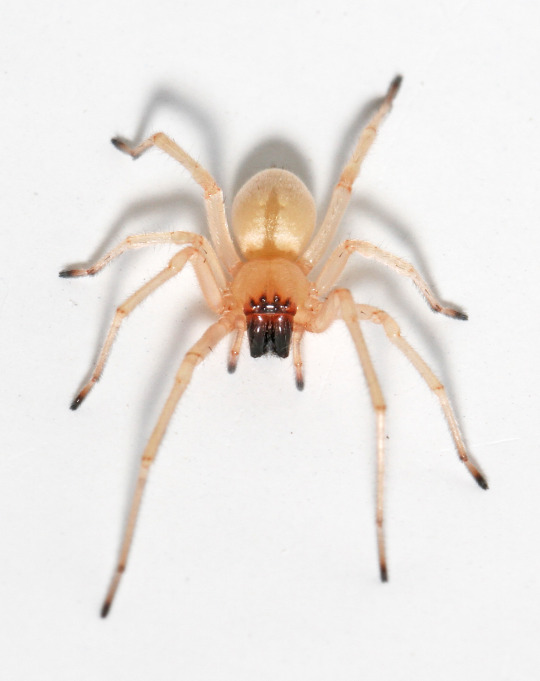
📷2: “Cheiracanthium inclusum (Miturgidae)” by Joe Lapp on Flickr (CC BY-NC 2.0)

📷3: Public Domain
6 notes
·
View notes
Photo

arachno lycanthropy.
I assure you that this is in fact not a facehugger, and that there’s no cause for alarm. This is a yellow sac spider (cheiracanthium inclusum), a nocturnal hunter. They have a bad reputation for being both aggressive and possibly causing necrotic lesions, in a manner similar to but not nearly as potent as the brown recluse. However, while they will bite if provoked or threatened, there has been a lack of substantial evidence in reviews of the scientific literature that their bites are medically significant. One theory even argues that what was believed to have been necrosis in some cases may have actually been a coincidental MRSA infection, possibly caused indirectly by the spider since they sometimes feed on dead or decaying organic matter. If you respect them, they are actually very helpful, preying chiefly and efficiently on what we consider to be pests.
0 notes